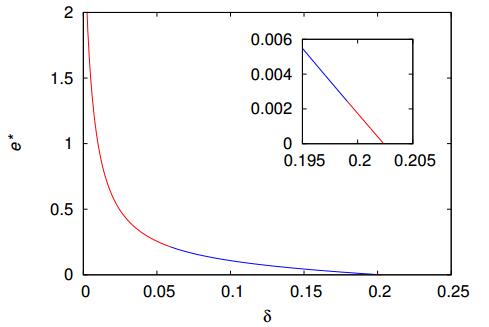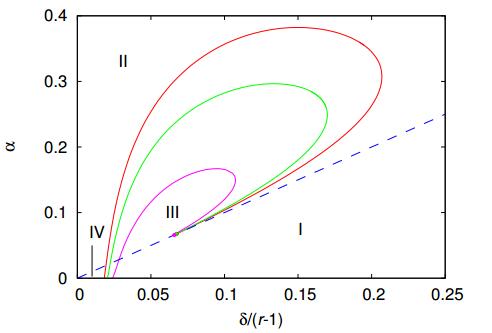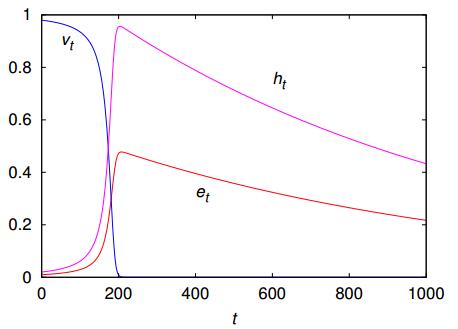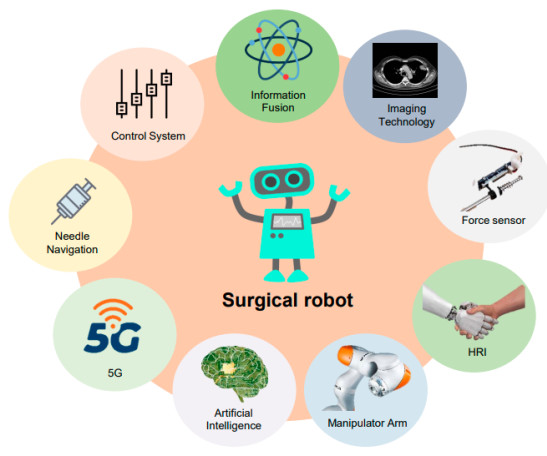|
[1]
|
E. Crosas-Molist, R. Samain, L. Kohlhammer, J. L. Orgaz, S. L. George, O. Maiques, et al., Rho gtpase signaling in cancer progression and dissemination, Phys. Rev., 102 (2022), 455–510. https://doi.org/10.1152/physrev.00045.2020 doi: 10.1152/physrev.00045.2020

|
|
[2]
|
A. F. Chambers, A. C. Groom, I. C. MacDonald, Dissemination and growth of cancer cells in metastatic sites, Nat. Rev. Cancer, 2 (2002), 563–572. https://doi.org/10.1038/nrc865 doi: 10.1038/nrc865

|
|
[3]
|
M. S. Pepe, R. Etzioni, Z. Feng, J. D. Potter, M. L. Thompson, M. Thornquist, et al., Phases of biomarker development for early detection of cancer, JNCI-J NATL Cancer I, 93 (2001), 1054–1061. https://doi.org/10.1038/nrc865 doi: 10.1038/nrc865

|
|
[4]
|
R. A. Smith, V. Cokkinides, H. J. Eyre, American cancer society guidelines for the early detection of cancer, 2006, CA Cancer J. Clin., 56 (2006), 11–25. https://doi.org/10.3322/canjclin.52.1.8 doi: 10.3322/canjclin.52.1.8

|
|
[5]
|
M. Richards, The size of the prize for earlier diagnosis of cancer in england, Br. J. Cancer, 101 (2009), S125–S129. https://doi.org/10.1038/sj.bjc.6605402 doi: 10.1038/sj.bjc.6605402

|
|
[6]
|
X. Chen, J. Gole, A. Gore, Q. He, M. Lu, J. Min, et al., Non-invasive early detection of cancer four years before conventional diagnosis using a blood test, Nat. Commun., 11 (2020), 1–10. https://doi.org/10.1038/s41467-020-17316-z doi: 10.1038/s41467-020-17316-z

|
|
[7]
|
R. Guo, G. Lu, B. Qin. B. Fei, Ultrasound imaging technologies for breast cancer detection and management: A review, Ultrasound Med. Biol., 44 (2018), 37–70. https://doi.org/10.1016/j.ultrasmedbio.2017.09.012 doi: 10.1016/j.ultrasmedbio.2017.09.012

|
|
[8]
|
K. Bouchelouche, B. Turkbey, P. Choyke, J. Capala, Imaging prostate cancer: An update on positron emission tomography and magnetic resonance imaging, Curr. Urol. Rep., 11 (2010), 180–190. https://doi.org/10.1007/s11934-010-0105-9 doi: 10.1007/s11934-010-0105-9

|
|
[9]
|
Q. Zhou, J. Dong, J. He, D. Liu, D. H. Tian, S. Gao, et al., The society for translational medicine: indications and methods of percutaneous transthoracic needle biopsy for diagnosis of lung cancer, J. Thorac. Dis., 10 (2018), 5538. https://doi.org/10.21037/jtd.2018.09.28 doi: 10.21037/jtd.2018.09.28

|
|
[10]
|
E. I. Kreydin, B. H. Eisner, Risk factors for sepsis after percutaneous renal stone surgery, Nat. Rev. Urol., 10 (2013), 598–605. https://doi.org/10.1038/nrurol.2013.183 doi: 10.1038/nrurol.2013.183

|
|
[11]
|
L. Lehrskov, M. Westen, S. Larsen, A. Jensen, B. Kristensen, T. Bisgaard, Fluorescence or x-ray cholangiography in elective laparoscopic cholecystectomy: A randomized clinical trial, Br. J. Surg., 107 (2020), 655–661. https://doi.org/10.1002/bjs.11510 doi: 10.1002/bjs.11510

|
|
[12]
|
H. Su, W. Qi, J. Chen, D. Zhang, Fuzzy approximation-based task-space control of robot manipulators with remote center of motion constraint, IEEE Transact. Fuzzy Syst., 30 (2022), 1564–1573. https://doi.org/10.1109/TFUZZ.2022.3157075 doi: 10.1109/TFUZZ.2022.3157075

|
|
[13]
|
R. Barua, S. Datta, Modernization of robotics application in 21st century: A review, J Mech Robot, 5 (2020). https://doi.org/10.46610/JMMDM.2020.05102.005 doi: 10.46610/JMMDM.2020.05102.005

|
|
[14]
|
H. Su, W. Qi, Y. Hu, H. R. Karimi, G. Ferrigno, E. De Momi, An incremental learning framework for human-like redundancy optimization of anthropomorphic manipulators, IEEE Transact. Indust. Inform., 18 (2020), 1864–1872. https://doi.org/10.1109/TII.2020.3036693 doi: 10.1109/TII.2020.3036693

|
|
[15]
|
W. Qi, H. Su, A cybertwin based multimodal network for ecg patterns monitoring using deep learning, IEEE Transact. Indust. Inform., 18 (2022), 6663–6670. https://doi.org/10.1109/TII.2022.3159583 doi: 10.1109/TII.2022.3159583

|
|
[16]
|
H. Qiao, J. Chen, X. Huang, A survey of brain-inspired intelligent robots: Integration of vision, decision, motion control, and musculoskeletal systems, IEEE Transact. Cybernet., 52 (2022), 11267–11280. https://doi.org/10.1109/TCYB.2021.3071312 doi: 10.1109/TCYB.2021.3071312

|
|
[17]
|
A. Joseph, B. Christian, A. A. Abiodun, F. Oyawale, A review on humanoid robotics in healthcare, in MATEC Web of Conferences, vol. 153, EDP Sciences, 2018, 02004. https://doi.org/10.1051/matecconf/201815302004
|
|
[18]
|
S. Chen, F. Wang, Y. Lin, Q. Shi, Y. Wang, Ultrasound-guided needle insertion robotic system for percutaneous puncture, Int. J. CARS., 16 (2021), 475–484. https://doi.org/10.1007/s11548-020-02300-1 doi: 10.1007/s11548-020-02300-1

|
|
[19]
|
B. Zhao, Y. Fu, Y. Yang, P. Zhang, Y. Hu, Design and control of a mri-compatible pneumatic needle puncture robot, Comput. Assist Surg., 24 (2019), 87–93. https://doi.org/10.1080/24699322.2019.1649067 doi: 10.1080/24699322.2019.1649067

|
|
[20]
|
H. Su, W. Qi, Y. Schmirander, S. E. Ovur, S. Cai, X. Xiong, A human activity-aware shared control solution for medical human–robot interaction, Assembly Autom., 42 (2022), 388–394. https://doi.org/10.1108/AA-12-2021-0174 doi: 10.1108/AA-12-2021-0174

|
|
[21]
|
L. Zhang, C. Li, Y. Fan, X. Zhang, J. Zhao, Physician-friendly tool center point calibration method for robot-assisted puncture surgery, Sensors, 21 (2021), 366. https://doi.org/10.3390/s21020366 doi: 10.3390/s21020366

|
|
[22]
|
H. Li, Y. Wang, Y. Li, J. Zhang, A novel manipulator with needle insertion forces feedback for robot-assisted lumbar puncture, Int. J. Med. Robot., 17 (2021), e2226. https://doi.org/10.1002/rcs.2226 doi: 10.1002/rcs.2226

|
|
[23]
|
H. Su, A. Mariani, S. E. Ovur, A. Menciassi, G. Ferrigno, E. De Momi, Toward teaching by demonstration for robot-assisted minimally invasive surgery, IEEE Transact. Autom. Sci. Eng., 18 (2021), 484–494. https://doi.org/10.1109/TASE.2020.3045655 doi: 10.1109/TASE.2020.3045655

|
|
[24]
|
M. J. Page, J. E. McKenzie, P. M. Bossuyt, I. Boutron, T. C. Hoffmann, C. D. Mulrow, et al., The prisma 2020 statement: An updated guideline for reporting systematic reviews, Syst. Rev., 10 (2021), 1–11. https://doi.org/10.1016/j.ijsu.2021.105906 doi: 10.1016/j.ijsu.2021.105906

|
|
[25]
|
P. Zamora-Ortiz, J. Carral-Alvaro, Á. Valera, J. L. Pulloquinga, R. J. Escarabajal, V. Mata, Identification of inertial parameters for position and force control of surgical assistance robots, Mathematics, 9 (2021), 773. https://doi.org/10.3390/math9070773 doi: 10.3390/math9070773

|
|
[26]
|
S. Mukai, H. Egi, M. Hattori, Y. Sumi, Y. Kurita, H. Ohdan, Omnidirectional camera and head-mount display contribute to the safety of laparoscopic surgery, Minim Invasiv. Ther., 31 (2022), 540–547. https://doi.org/10.1080/13645706.2020.1851725 doi: 10.1080/13645706.2020.1851725

|
|
[27]
|
C. Bergeles, G.-Z. Yang, From passive tool holders to microsurgeons: safer, smaller, smarter surgical robots, IEEE Transact. Biomed. Eng., 61 (2013), 1565–1576. https://doi.org/0.1109/TBME.2013.2293815 doi: 10.1109/TBME.2013.2293815

|
|
[28]
|
T. Cheng, W. Li, C. S. H. Ng, P. W. Y. Chiu, Z. Li, Visual servo control of a novel magnetic actuated endoscope for uniportal video-assisted thoracic surgery, IEEE Robot. Autom. Letters, 4 (2019), 3098–3105. https://doi.org/10.1109/LRA.2019.2924838 doi: 10.1109/LRA.2019.2924838

|
|
[29]
|
M. G. Fujie, B. Zhang, State-of-the-art of intelligent minimally invasive surgical robots, Front. Med., 14 (2020), 404–416. https://doi.org/10.1007/s11684-020-0743-3 doi: 10.1007/s11684-020-0743-3

|
|
[30]
|
K. Safiejko, R. Tarkowski, M. Koselak, M. Juchimiuk, A. Tarasik, M. Pruc, et al., Robotic-assisted vs. standard laparoscopic surgery for rectal cancer resection: a systematic review and meta-analysis of 19,731 patients, Cancers, 14 (2022), 180. https://doi.org/10.3390/cancers14010180 doi: 10.3390/cancers14010180

|
|
[31]
|
F.-H. Meng, Y. Song, B. Qiao, N.-H. Jin, Y.-M. Zhu, B.-F. Liang, et al., Image-guided, surgical robot-assisted percutaneous puncture of the foramen ovale and foramina stylomastoideum: A cadaveric study, Chin. Med. J., 134 (2021), 2362–2364. https://doi.org/10.1097/CM9.0000000000001783 doi: 10.1097/CM9.0000000000001783

|
|
[32]
|
H. Park, K. N. Han, B. H. Choi, H. Yoon, H. J. An, J. S. Lee, et al., Ultra-low-dose intraoperative x-ray imager for minimally invasive surgery: a pilot imaging study, Trans. Lung Cancer Res., 11 (2022), 588–599. https://doi.org/10.21037/tlcr-21-909 doi: 10.21037/tlcr-21-909

|
|
[33]
|
S. Lim, C. Jun, D. Chang, D. Petrisor, M. Han, D. Stoianovici, Robotic transrectal ultrasound guided prostate biopsy, IEEE Transact. Biomed. Eng., 66 (2019), 2527–2537. https://doi.org/10.1109/TBME.2019.2891240 doi: 10.1109/TBME.2019.2891240

|
|
[34]
|
Y. Gao, X. Liu, X. Zhang, Z. Zhou, W. Jiang, L. Chen, et al., A dual-armed robotic puncture system: Design, implementation and preliminary tests, Electronics, 11 (2022), 740. https://doi.org/10.3390/electronics11050740 doi: 10.3390/electronics11050740

|
|
[35]
|
J. Tan, B. Li, Y. Li, B. Li, X. Chen, J. Wu, et al., A flexible and fully autonomous breast ultrasound scanning system, IEEE Transact. Autom. Sci. Eng.. https://doi.org/10.1109/TASE.2022.3189339
|
|
[36]
|
T. Lakhanpal, B. R. Mittal, R. Kumar, A. Watts, N. Rana, H. Singh, Radiation exposure to the personnel performing robotic arm-assisted positron emission tomography/computed tomography-guided biopsies, Indian J. Nucl. Med., 33 (2018), 209. https://doi.org/10.4103/ijnm.IJNM-31-18 doi: 10.4103/ijnm.IJNM-31-18

|
|
[37]
|
J. Ghelfi, A. Moreau-Gaudry, N. Hungr, C. Fouard, B. Veron, M. Medici, et al., Evaluation of the needle positioning accuracy of a light puncture robot under mri guidance: Results of a clinical trial on healthy volunteers, Cardiov. Int. Radiol., 41 (2018), 1428–1435. https://doi.org/10.1007/s00270-018-2001-5 doi: 10.1007/s00270-018-2001-5

|
|
[38]
|
M. Anvari, T. Chapman, K. Barlow, T. Cookson, C. Van Toen, T. Fielding, Clinical safety and efficacy of a fully automated robot for magnetic resonance imaging-guided breast biopsy, Int. J. Med. Robot. Comp., e2472. https://doi.org/10.1002/rcs.2472
|
|
[39]
|
C. Song, Z. Yang, S. Jiang, Z. Zhou, D. Zhang, An integrated navigation system based on a dedicated breast support device for mri-guided breast biopsy, Int. J. Comput. Assist Radiol. Surg., 17 (2022), 993–1005. https://doi.org/10.1007/s11548-022-02640-0 doi: 10.1007/s11548-022-02640-0

|
|
[40]
|
J. C. Vilanova, A. Pérez de Tudela, J. Puig, M. Hoogenboom, J. Barceló, M. Planas, et al., Robotic-assisted transrectal mri-guided biopsy. technical feasibility and role in the current diagnosis of prostate cancer: An initial single-center experience, Abdom Radio, 45 (2020), 4150–4159. https://doi.org/10.1007/s00261-020-02665-6 doi: 10.1007/s00261-020-02665-6

|
|
[41]
|
E. Ben-David, M. Shochat, I. Roth, I. Nissenbaum, J. Sosna, S. N. Goldberg, Evaluation of a ct-guided robotic system for precise percutaneous needle insertion, J. Vasc. Interv. Radiol., 29 (2018), 1440–1446. https://doi.org/10.1016/j.jvir.2018.01.002 doi: 10.1016/j.jvir.2018.01.002

|
|
[42]
|
A. Nagao, T. Matsuno, T. Kamegawa, T. Hiraki, Installation angle offset compensation of puncture robot based on measurement of needle by CT equipment, Int. J. Mechatron. Autom., 6 (2018), 190–200. https://doi.org/10.1109/ICMA.2017.8015859 doi: 10.1109/ICMA.2017.8015859

|
|
[43]
|
M. Kostrzewa, A. Rothfuss, T. Pätz, M. Kühne, S. O. Schoenberg, S. J. Diehl, et al., Robotic assistance system for cone-beam computed tomography-guided percutaneous needle placement, Cardiov. Int. Radiol., 45 (2022), 62–68. https://doi.org/10.1007/s00270-021-02938-7 doi: 10.1007/s00270-021-02938-7

|
|
[44]
|
X. Chen, Y. Yan, A. Li, T. Wang, Y. Wang, Robot-assisted needle insertion for ct-guided puncture: Experimental study with a phantom and animals, Cardiov. Int. Radiol., 1–8. https://doi.org/10.1007/s00270-022-03301-0
|
|
[45]
|
L. Lei, H. Tang, J. Zhang, Y. Wu, B. Zhao, Y. Hu, et al., Automatic registration and precise tumour localization method for robot-assisted puncture procedure under inconsistent breath-holding conditions, Int. J. Med. Robot., 17 (2021), e2319. https://doi.org/10.1002/rcs.2319 doi: 10.1002/rcs.2319

|
|
[46]
|
Y. Croissant, S. Zangos, M. H. Albrecht, K. Eichler, C. Schomerus, A. Spandorfer, et al., Robot-assisted percutaneous placement of k-wires during minimally invasive interventions of the spine, Minim Invas. Ther., 28 (2019), 373–380. https://doi.org/10.1080/13645706.2018.1544567 doi: 10.1080/13645706.2018.1544567

|
|
[47]
|
Z. Han, K. Yu, L. Hu, W. Li, H. Yang, M. Gan, et al., A targeting method for robot-assisted percutaneous needle placement under fluoroscopy guidance, Comput. Assist Surg., 24 (2019), 44–52. https://doi.org/10.1080/24699322.2018.1557907 doi: 10.1080/24699322.2018.1557907

|
|
[48]
|
S. Said, P. Clauser, N. Ruiter, P. Baltzer, T. Hopp, Image registration between mri and spot mammograms for x-ray guided stereotactic breast biopsy: Preliminary results, in Medical Imaging 2021: Image-Guided Procedures, Robotic Interventions, and Modeling, vol. 11598, SPIE, 2021,354–361. https://doi.org/10.1117/12.2581820
|
|
[49]
|
S. Said, P. Clauser, N. Ruiter, P. Baltzer, T. Hopp, Image based registration between full x-ray and spot mammograms for x-ray guided stereotactic breast biopsy, in Medical Imaging 2022: Image-Guided Procedures, Robotic Interventions, and Modeling, vol. 12034, SPIE, 2022,614–621. https://doi.org/10.1117/12.2611509
|
|
[50]
|
M. K. Welleweerd, D. Pantelis, A. G. de Groot, F. J. Siepel, S. Stramigioli, Robot-assisted ultrasound-guided biopsy on mr-detected breast lesions, in 2020 IEEE/RSJ International Conference on Intelligent Robots and Systems (IROS), IEEE, 2020, 2965–2971. https://doi.org/10.1109/IROS45743.2020.9341695
|
|
[51]
|
S. Xiao, C. Wang, Y. Shi, J. Yu, L. Xiong, C. Peng, et al., Visual optimization of ultrasound-guided robot-assisted procedures using variable impedance control, in 2021 WRC Symposium on Advanced Robotics and Automation (WRC SARA), IEEE, 2021,128–133. https://doi.org/10.1109/WRCSARA53879.2021.9612667
|
|
[52]
|
M. Schlüter, S. Gerlach, C. Fürweger, A. Schlaefer, Analysis and optimization of the robot setup for robotic-ultrasound-guided radiation therapy, Int. J. CARS., 14 (2019), 1379–1387. https://doi.org/10.1007/s11548-019-02009-w doi: 10.1007/s11548-019-02009-w

|
|
[53]
|
J. Berger, M. Unger, J. Keller, C. M. Reich, T. Neumuth, A. Melzer, Design and validation of a medical robotic device system to control two collaborative robots for ultrasound-guided needle insertions, Front. Robot. AI, 9 (2022), 875845. https://doi.org/10.3389/frobt.2022.875845 doi: 10.3389/frobt.2022.875845

|
|
[54]
|
M. Z. Mahmoud, M. Aslam, M. Alsaadi, M. A. Fagiri, B. Alonazi, Evolution of robot-assisted ultrasound-guided breast biopsy systems, J. Radiat. Res. Appl. Sc., 11 (2018), 89–97. https://doi.org/10.1016/j.jrras.2017.11.005 doi: 10.1016/j.jrras.2017.11.005

|
|
[55]
|
M. K. Welleweerd, F. J. Siepel, V. Groenhuis, J. Veltman, S. Stramigioli, Design of an end-effector for robot-assisted ultrasound-guided breast biopsies, Int. J. CARS., 15 (2020), 681–690. https://doi.org/10.1007/s11548-020-02122-1 doi: 10.1007/s11548-020-02122-1

|
|
[56]
|
A. Nath, A. Prashanth, H. Lal, S. Kumar, S. Barai, S. Gambhir, Robotic-assisted computed tomography-guided 18f-fdg pet/computed tomography-directed biopsy for diagnosis of intra thoracic lesions: An experience from a tertiary care centre in north India, Nucl. Med. Commun., 41 (2020), 246–251. https://doi.org/10.1097/MNM.0000000000001148 doi: 10.1097/MNM.0000000000001148

|
|
[57]
|
B. Mittal, R. Kumar, H. Singh, A. Watts, N. Rana, A. Bhattacharya, Robotic arm assisted real time ga-68 labelled tracer (dotanoc and psma) pet/ct guided percutaneous biopsies, J Nucl Med., 59 (2018). https://jnm.snmjournals.org/content/59/supplement-1/1494
|
|
[58]
|
R. Kumar, B. Mittal, A. Bhattacharya, S. Vadi, H. Singh, A. Bal, et al., Positron emission tomography/computed tomography guided percutaneous biopsies of ga-68 avid lesions using an automated robotic arm, Diagn. Interv. Imag., 101 (2020), 157–167. https://doi.org/10.1016/j.diii.2019.10.006 doi: 10.1016/j.diii.2019.10.006

|
|
[59]
|
K. Deva, N. Rana, R. Kumar, B. R. Mittal, Evaluation of radiation exposure to the patients undergoing positron emission tomography/computed tomography-guided biopsies, Indian J. Nucl. Med., 37 (2022), 23. https://doi.org/10.4103/ijnm.ijnm-112-21 doi: 10.4103/ijnm.ijnm-112-21

|
|
[60]
|
E. Mendoza, J. P. Whitney, A testbed for haptic and magnetic resonance imaging-guided percutaneous needle biopsy, IEEE Robot. Autom. Letters, 4 (2019), 3177–3183. https://doi.org/10.1109/LRA.2019.2925558 doi: 10.1109/LRA.2019.2925558

|
|
[61]
|
Z. He, Z. Dong, G. Fang, J. D.-L. Ho, C.-L. Cheung, H.-C. Chang, et al., Design of a percutaneous mri-guided needle robot with soft fluid-driven actuator, IEEE Robot. Autom. Letters, 5 (2020), 2100–2107. https://doi.org/10.1109/LRA.2020.2969929 doi: 10.1109/LRA.2020.2969929

|
|
[62]
|
N. A. Patel, G. Li, W. Shang, M. Wartenberg, T. Heffter, E. C. Burdette, et al., System integration and preliminary clinical evaluation of a robotic system for mri-guided transperineal prostate biopsy, J. Med. Robot. Res., 4 (2019), 1950001. https://doi.org/10.1142/S2424905X19500016 doi: 10.1142/S2424905X19500016

|
|
[63]
|
M. I. Patel, S. Muter, P. Vladica, D. Gillatt, Robotic-assisted magnetic resonance imaging ultrasound fusion results in higher significant cancer detection compared to cognitive prostate targeting in biopsy naive men, Transl. Androl. Urol., 9 (2020), 601. https://doi.org/10.21037/tau.2020.01.33 doi: 10.21037/tau.2020.01.33

|
|
[64]
|
M. Sandahl, K. J. Sandahl, E. Marinovskij, T. F. Nielsen, K. D. Sørensen, M. Borre, et al., Prostate cancer detection rate of manually operated and robot-assisted in-bore magnetic resonance imaging targeted biopsy, Eur. Urol., 41 (2022), 88–94. https://doi.org/10.1016/j.euros.2022.05.002 doi: 10.1016/j.euros.2022.05.002

|
|
[65]
|
M. Giannakou, C. Yiallouras, G. Menikou, C. Ioannides, C. Damianou, Mri-guided frameless biopsy robotic system with the inclusion of unfocused ultrasound transducer for brain cancer ablation, Int. J. Med. Robot., 15 (2019), e1951. https://doi.org/10.1002/rcs.1951 doi: 10.1002/rcs.1951

|
|
[66]
|
E. W. Johnston, N. Fotiadis, C. Cummings, J. Basso, T. Tyne, J. Lameijer, et al., Developing and testing a robotic mri/ct fusion biopsy technique using a purpose-built interventional phantom, Eur. Radiol. Exp., 6 (2022), 1–10. https://doi.org/10.1186/s41747-022-00308-7 doi: 10.1186/s41747-022-00308-7

|
|
[67]
|
W. Liu, Z. Yang, S. Jiang, D. Feng, D. Zhang, Design and implementation of a new cable-driven robot for mri-guided breast biopsy, Int. J. Med. Robot. Comp., 16 (2020), e2063. https://doi.org/10.1002/rcs.2063 doi: 10.1002/rcs.2063

|
|
[68]
|
G. P. Ghantasala, N. V. Kumari, Breast cancer treatment using automated robot support technology for mri breast biopsy, Int. J. Educ. Soc. Sci. Linguist., 1 (2021), 235–242. http://internationaljournal.unigha.ac.id/index.php/IJESLi/article/view/63
|
|
[69]
|
P. Moreira, N. Patel, M. Wartenberg, G. Li, K. Tuncali, T. Heffter, et al., Evaluation of robot-assisted mri-guided prostate biopsy: needle path analysis during clinical trials, Phys. Med. Biol., 63 (2018), 20NT02. https://doi.org/10.1088/1361-6560/aae214 doi: 10.1088/1361-6560/aae214

|
|
[70]
|
W. K. Ma, B. S. Ho, A. S. Lai, K. C. Lam, Y. S. Chan, L. K. Yip, et al., Multiparametric magnetic resonance imaging/transrectal ultrasound fusion prostate biopsy with semi-robotic navigation in the chinese population: Initial results, Asian J. Androl., 20 (2018), 93. https://doi.org/10.4103/1008-682X.196855 doi: 10.4103/1008-682X.196855

|
|
[71]
|
M. Barral, A. Lefevre, P. Camparo, M. Hoogenboom, T. Pierre, P. Soyer, et al., In-bore transrectal mri–guided biopsy with robotic assistance in the diagnosis of prostate cancer: An analysis of 57 patients, AJR Am. J. Roentgenol., 213 (2019), W171–W179. https://doi.org/10.2214/AJR.19.21145 doi: 10.2214/AJR.19.21145

|
|
[72]
|
A. Smakic, N. Rathmann, M. Kostrzewa, S. O. Schönberg, C. Weiß, S. J. Diehl, Performance of a robotic assistance device in computed tomography-guided percutaneous diagnostic and therapeutic procedures, Cardiov, Int, Radiol., 41 (2018), 639–644. https://doi.org/10.1007/s00270-017-1841-8 doi: 10.1007/s00270-017-1841-8

|
|
[73]
|
S. Levy, S. N. Goldberg, I. Roth, M. Shochat, J. Sosna, I. Leichter, et al., Clinical evaluation of a robotic system for precise ct-guided percutaneous procedures, Abdom Radiol., 46 (2021), 5007–5016. https://doi.org/10.1007/s00261-021-03175-9 doi: 10.1007/s00261-021-03175-9

|
|
[74]
|
T. de Baere, C. Roux, G. Noel, A. Delpla, F. Deschamps, E. Varin, et al., Robotic assistance for percutaneous needle insertion in the kidney: Preclinical proof on a swine animal model, Eur. Radiol. Exp., 6 (2022), 1–7. https://doi.org/10.1186/s41747-022-00265-1 doi: 10.1186/s41747-022-00265-1

|
|
[75]
|
Y. Takahashi, K. Izumi, R. Saito, I. Ikeda, R. Tsumura, H. Iwata, Development of needle guide unit considering buckling bone-perforation control strategy based on computed tomography-guided needle insertion robot, in Ann. Int. Conf. IEEE Eng. Med. Biol. Soc., IEEE, 2022, 4391–4396. https://doi.org/10.1109/EMBC48229.2022.9871709
|
|
[76]
|
T. Hiraki, T. Kamegawa, T. Matsuno, J. Sakurai, T. Komaki, T. Yamaguchi, et al., Robotic needle insertion during computed tomography fluoroscopy–guided biopsy: Prospective first-in-human feasibility trial, Eur. Radiol., 30 (2020), 927–933. https://doi.org/10.1007/s00330-019-06409-z doi: 10.1007/s00330-019-06409-z

|
|
[77]
|
T.-F. Zhang, Z. Fu, Y. Wang, W.-Y. Shi, G.-B. Chen, d J. Fei, Lesion positioning method of a ct-guided surgical robotic system for minimally invasive percutaneous lung, Int. J. Med. Robot., 16 (2020), e2044. https://doi.org/10.1002/rcs.2044 doi: 10.1002/rcs.2044

|
|
[78]
|
L. Wei, S. Jiang, Z. Yang, G. Zhang, L. Ma, A ct-guided robotic needle puncture method for lung tumours with respiratory motion, Phys. Med., 73 (2020), 48–56. https://doi.org/10.1016/j.ejmp.2020.04.003 doi: 10.1016/j.ejmp.2020.04.003

|
|
[79]
|
K. Y. Fong, A. S. M. Tan, M. S. B. Sulaiman, S. H. Leong, K. W. Ng, C. W. Too, Phantom and animal study of a robot-assisted, ct-guided targeting system using image-only navigation for stereotactic needle insertion without positional sensors, J. Vasc. Int. Radiol., 33 (2022), 1416–1423. https://doi.org/10.1016/j.jvir.2022.08.005 doi: 10.1016/j.jvir.2022.08.005

|
|
[80]
|
B. Guiu, T. De Baère, G. Noel, M. Ronot, Feasibility, safety and accuracy of a ct-guided robotic assistance for percutaneous needle placement in a swine liver model, Sci. Rep., 11 (2021), 1–11. https://doi.org/10.1038/s41598-021-84878-3 doi: 10.1038/s41598-021-84878-3

|
|
[81]
|
T. de Baère, C. Roux, F. Deschamps, L. Tselikas, B. Guiu, Evaluation of a new ct-guided robotic system for percutaneous needle insertion for thermal ablation of liver tumors: A prospective pilot study, Cardiov. Int. Radiol., 45 (2022), 1701–1709. https://doi.org/10.1007/s00270-022-03267-z doi: 10.1007/s00270-022-03267-z

|
|
[82]
|
W. J. Heerink, S. J. Ruiter, J. P. Pennings, B. Lansdorp, R. Vliegenthart, M. Oudkerk, et al., Robotic versus freehand needle positioning in ct-guided ablation of liver tumors: a randomized controlled trial, Radiology, 290 (2019), 826–832. https://doi.org/10.1148/radiol.2018181698 doi: 10.1148/radiol.2018181698

|
|
[83]
|
T. Hiraki, T. Matsuno, T. Kamegawa, T. Komaki, J. Sakurai, R. Matsuura, et al., Robotic insertion of various ablation needles under computed tomography guidance: Accuracy in animal experiments, Eur. J. Radiol., 105 (2018), 162–167. https://doi.org/10.1016/j.ejrad.2018.06.006 doi: 10.1016/j.ejrad.2018.06.006

|
|
[84]
|
I. Burovik, G. Prohorov, P. Lushina, A. Vasiliev, E. Degtiareva, Ct-guided robotic-assisted percutaneous interventions: first experience, Med. Visualiz., 27–35. https://doi.org/10.24835/1607-0763-2019-2-27-35
|
|
[85]
|
R. Kumar, B. R. Mittal, A. Bhattacharya, H. Singh, A. Bal, S. K. Vadi, et al., Diagnostic performance of real-time robotic arm-assisted 18f-fdg pet/ct-guided percutaneous biopsy in metabolically active abdominal and pelvic lesions, Eur. J. Nucl. Med. Mol. Imaging., 46 (2019), 838–847. https://doi.org/10.1007/s00259-018-4133-x doi: 10.1007/s00259-018-4133-x

|
|
[86]
|
L. Deboeuf, A. Moiraghi, C. Debacker, S. M. Peeters, G. A. Simboli, A. Roux, et al., Feasibility and accuracy of robot-assisted, stereotactic biopsy using 3-dimensional intraoperative imaging and frameless registration tool, Neurosurgery, (2022). https://doi.org/10.1227/neu.0000000000002294 doi: 10.1227/neu.0000000000002294

|
|
[87]
|
H. Qiao, S. Zhong, Z. Chen, H. Wang, Improving performance of robots using human-inspired approaches: a survey, Sci. China Inf. Sci., 65 (2022), 1–31. https://doi.org/10.1007/s11432-022-3606-1 doi: 10.1007/s11432-022-3606-1

|
|
[88]
|
E. Checcucci, D. Amparore, G. Volpi, F. Piramide, S. De Cillis, A. Piana, et al., Percutaneous puncture during pcnl: New perspective for the future with virtual imaging guidance, World J. Urol., 40 (2022), 639–650. https://doi.org/10.1007/s00345-021-03820-4 doi: 10.1007/s00345-021-03820-4

|
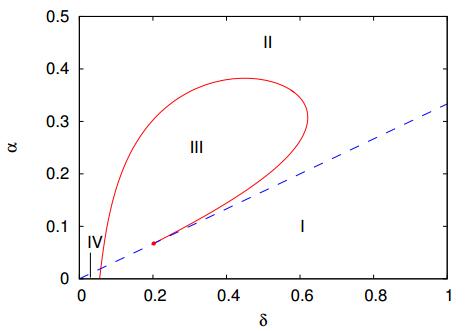









 DownLoad:
DownLoad:
